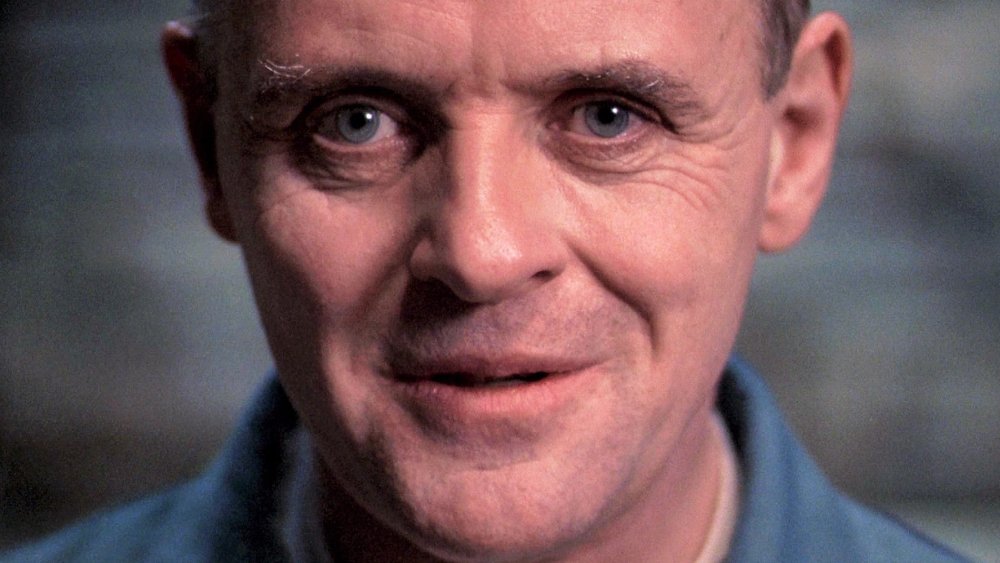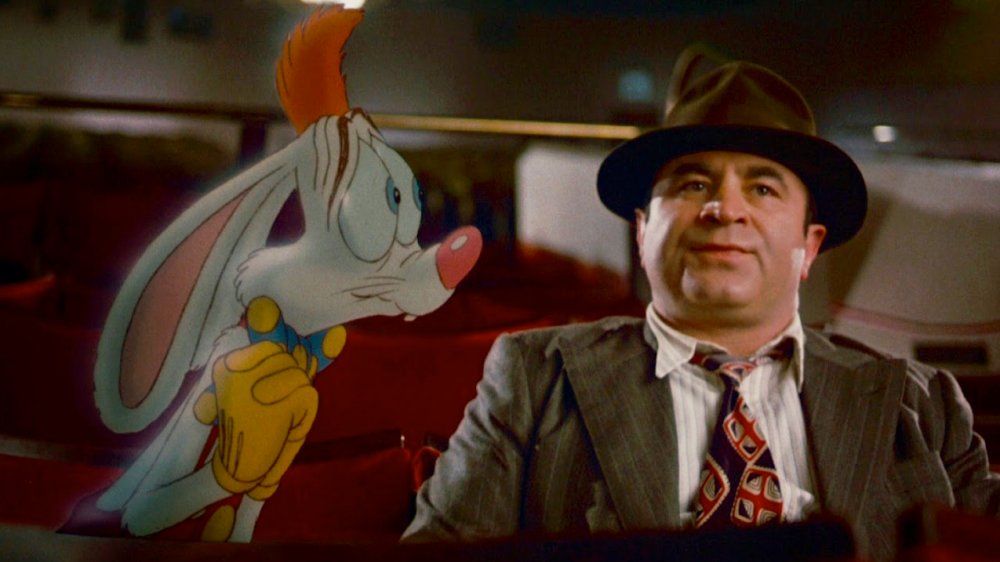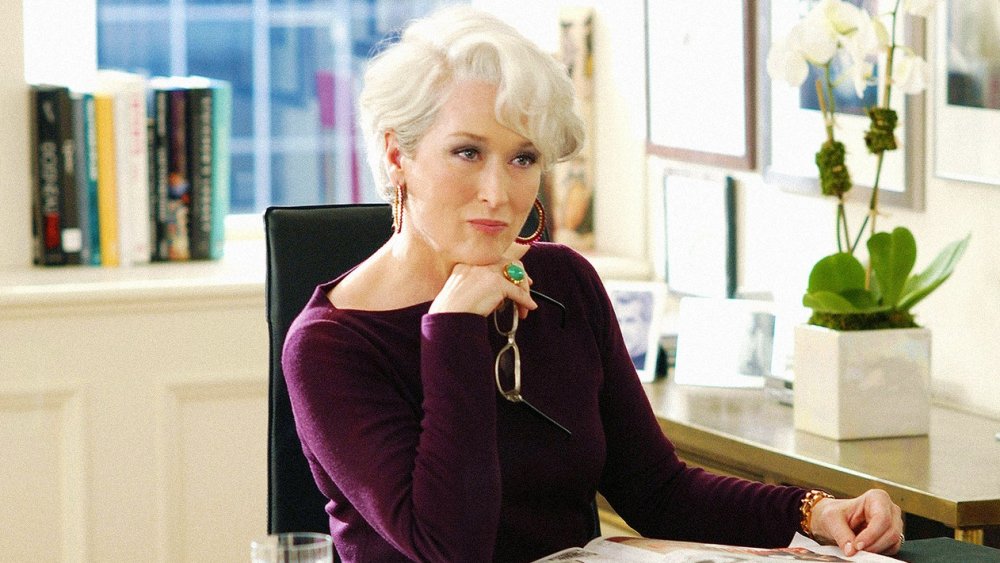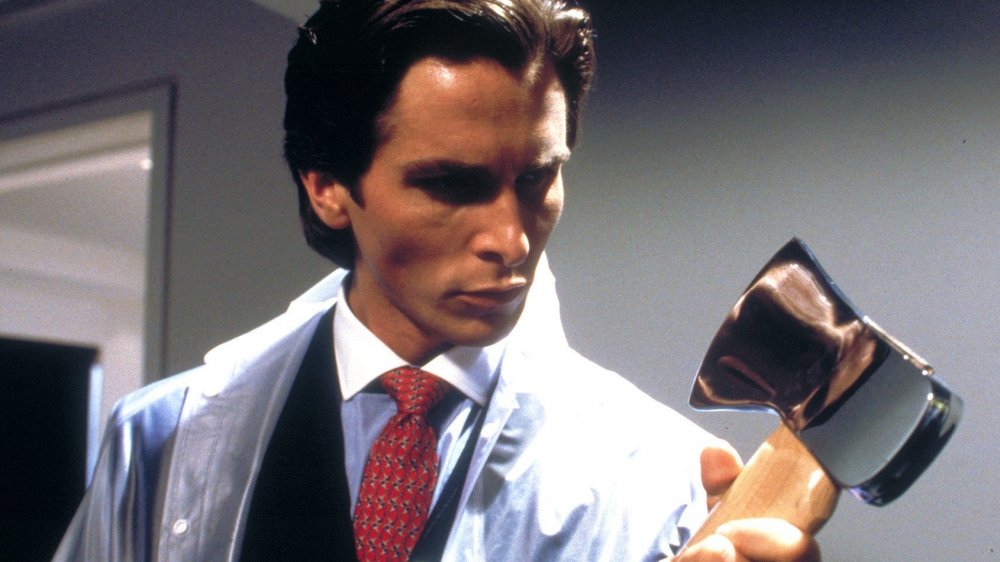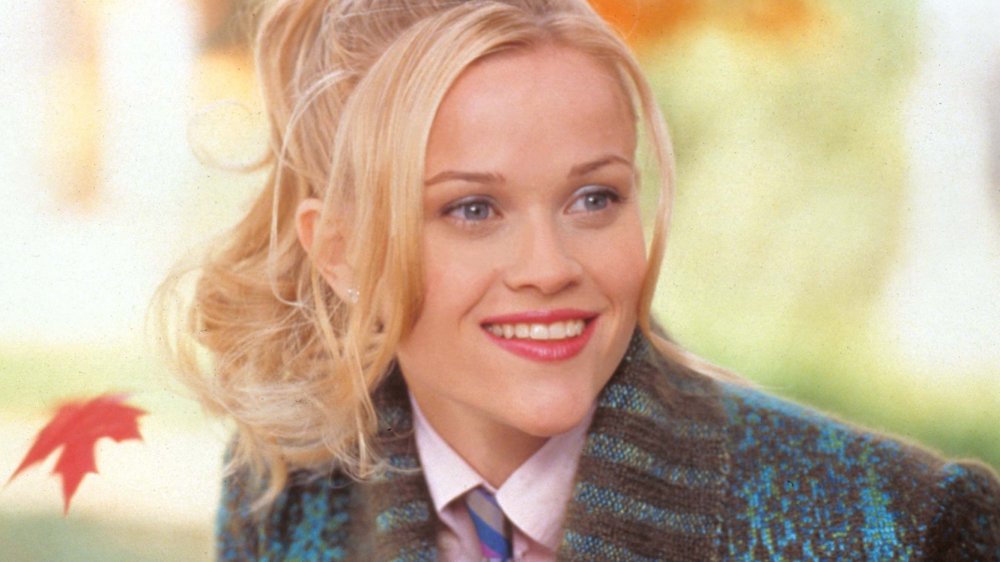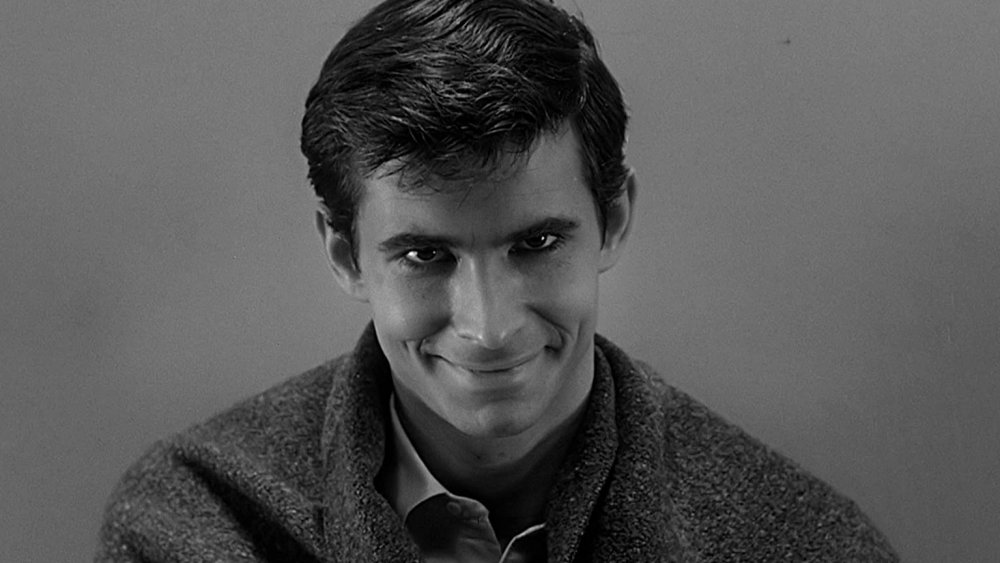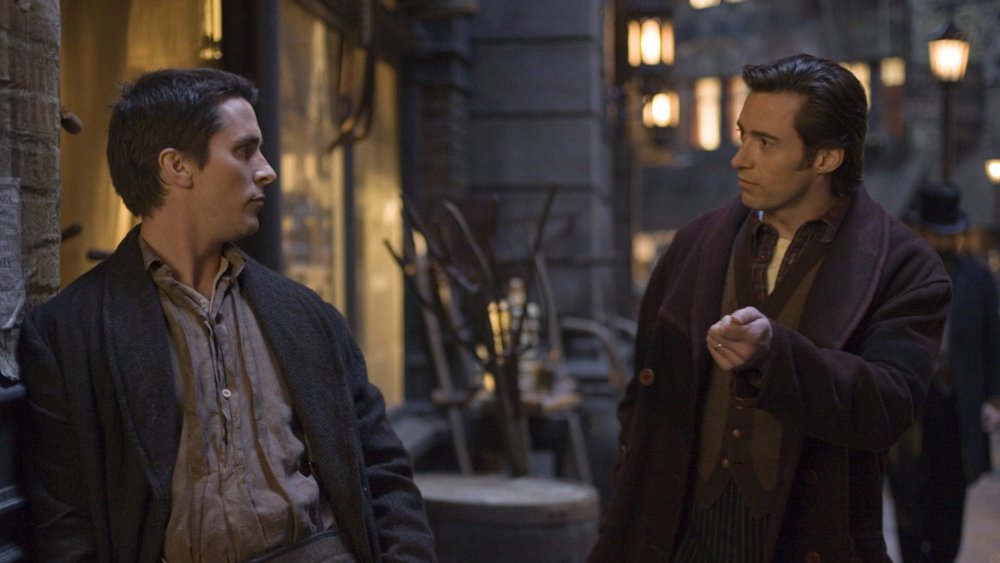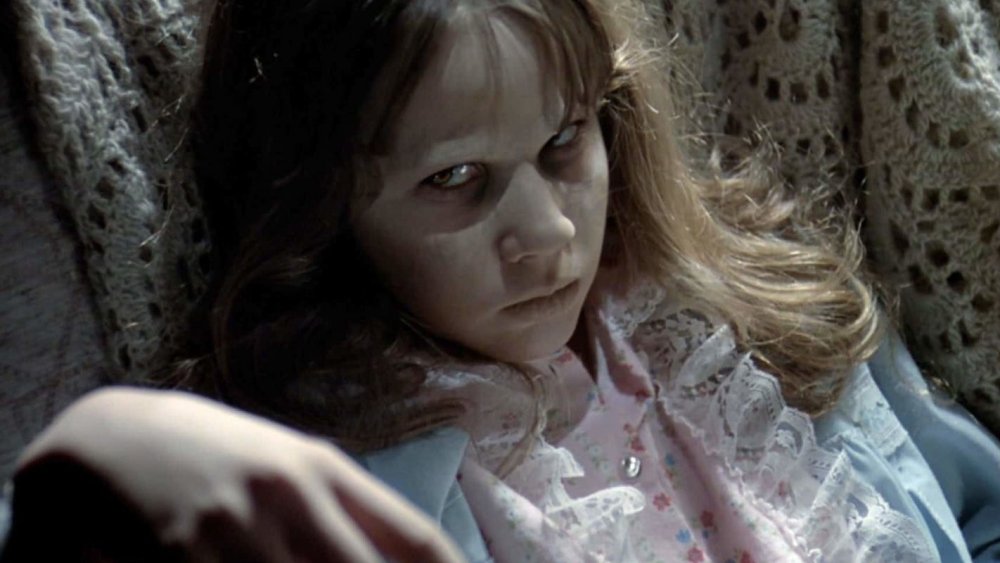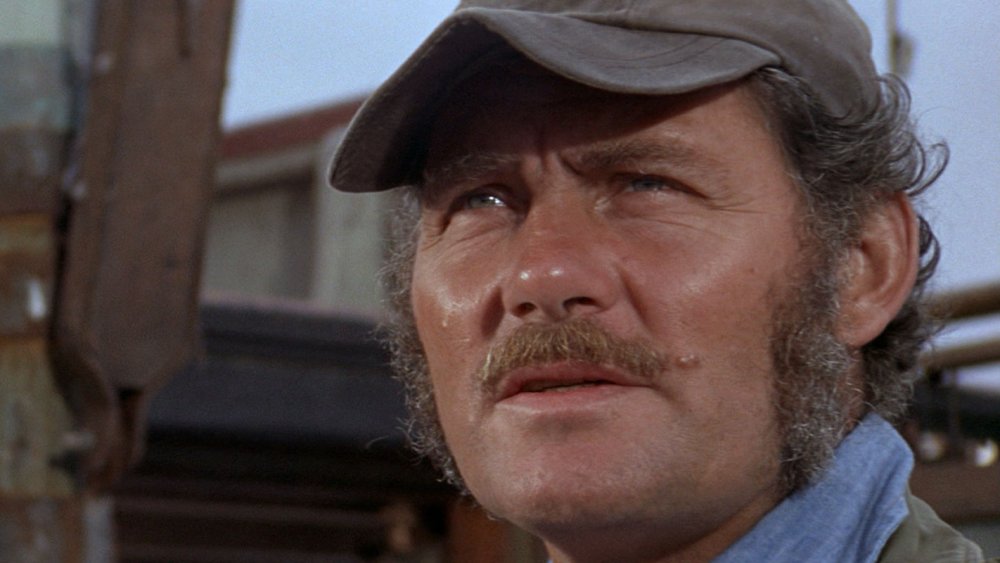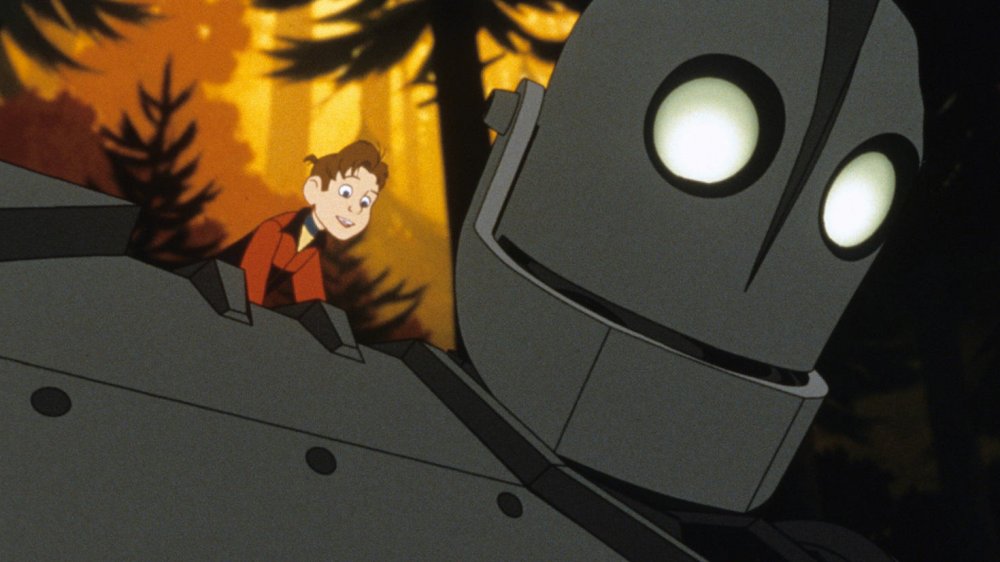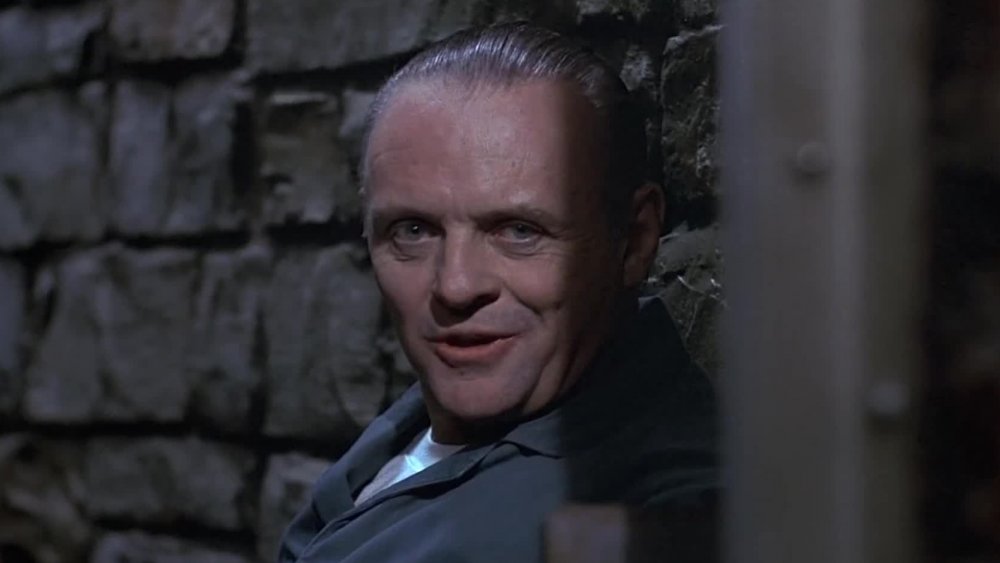Movies Better Than The Book
"The book was better." When it comes to movies adapted from novels, this old adages tends to be proven right. Sure, special effects bring an undeniable razzle-dazzle to the whole affair. Yes, some actors are capable of bringing their character to life with unique vibrancy. Sometimes, a movie adaptation even manages to significantly alter the story in a way fans approve of (no one really needed to see Disney animate Cinderella's wicked stepsisters chopping off their own toes). A movie adaptation can be quite good, even great, and occasionally, even a masterpiece. But ultimately, even if it hits those heights, the book still tends to reign supreme.
See, a book doesn't have to account for budget, runtime, or limited technology. Moreover, a book happens in collaboration with the reader, ensuring a unique bond. Harry Potter might describe Hogwarts, but its sights and smells live in your imagination. Sure, more people usually end up seeing the movie than reading the book, but as any bibliophile can tell you, that doesn't mean the movie is better.
And yet, every so often, a movie comes along and proves the old rule wrong by being solidly better than the book it's based on. Some are elevated by tremendously talented casts, while others make expert edits to their book's clunky story. However they do it, they triumph over their tomes, and we're here to celebrate them.
Who Framed Roger Rabbit? is sweeter and zanier than the novel
Who Framed Roger Rabbit? feels like the kind of movie that shouldn't exist. A zippy ode to the Golden Age of American animation, hard-boiled detective stories, and classic Hollywood, it feels more like a fever dream than a film. Cartoon goofballs and stubble-chinned private eyes live side by side. Roger Rabbit, an anthropomorphic bunny with an over-sized bow tie, is married to one of the most bodacious bombshells ever put to celluloid. Murder can be committed by performing lethally funny slapstick. By all accounts, Roger Rabbit should be a mess. Yet somehow, every disparate element comes together in harmony, bound by the filmmakers' infectious, whole-hearted enthusiasm.
Gary K. Wolf's 1981 novel Who Censored Roger Rabbit? is just as weird, with a number of key differences. Newspaper comics replace animation as the medium of choice (Snoopy and Beetle Bailey cameo instead of Betty Boop and Daffy Duck), toons can be murdered with plain old guns, and it all takes place in the present day. It works well enough on its own merits, and it parodies noir steeliness to great effect, but its mean streak deadens the whole affair. Jessica Rabbit is the best example of this difference. In the book, she's shallow, cruel, and her marriage to Roger contains none of the movie's sweetness. No wonder the sequel, Who P-P-P-Plugged Roger Rabbit? retcons the whole book as one of Jessica's dreams.
The Devil Wears Prada is automatically better thanks to Meryl Streep
It feels a bit cruel to point out that The Devil Wears Prada is better as a movie than a book. It does have Meryl Streep on its side, after all, in what's become one of her most celebrated roles. But her performance is simply too delicious to deny. As Miranda Priestly, Streep rides the line between outright camp and icy perfection with ludicrous precision. She is more Anna Wintour than Anna Wintour herself, the infamous inspiration for the character. And what surrounds her isn't lacking, either. Anne Hathaway charms as everygirl Andy, Stanley Tucci provokes laughter and genuine pathos as long-suffering Nigel, and Emily Blunt is razor-sharp as Andy's caustic colleague, also named Emily.
How could any book compete? Lauren Weisberger's 2003 novel does as good a job as anything could, really. Weisberger really was Anna Wintour's personal assistant, and she really did pour her juicy memories onto the page. As a result, the book has an irresistible confessional edge, shot through with a very real anger missing from the movie. It's worth a read, especially if one is interested in fashion. But when a book has been shot into the stratosphere of Streep-dom, it just has to accept second-place status. As Miranda would say, peering over the rim of her glasses, "That's all."
The American Psycho movie knows Patrick Bateman is a loser
Patrick Bateman is pathetic. The titular American Psycho would beg to differ, but the truth is apparent in every frame. Only one version of his story truly captures this, however, and it's not Bret Easton Ellis' 1991 novel — it's the 2000 movie adaptation of the same name.
Ellis' book can't help but nod along with Bateman, an investment banker by day and serial killer by night, even as he describes the character at his most empty. This isn't a surprise, really, as Ellis has openly discussed how much he drew on his own experiences in creating Bateman. It took Mary Harron and Christian Bale to examine Bateman's hollowness with a truly unsparing eye, and in so doing, they created a horror-comedy masterpiece. Bateman on film wields supreme power over others, and yet he's also an obnoxious little boy, convinced his banal opinions on music set him apart from the herd. The movie never loses sight of the fact that he's that guy, whom everyone rolls their eyes at the moment he leaves the room.
The tension between this power and pedestrianism, the Wall Street hotshot and the person so broken he admires himself in a mirror as he has sex, is present in the novel, to be sure. But only the movie is flooded with the sort of cruel, fluorescent light necessary to making American Psycho a fearless examination of consumer culture and its monsters.
Legally Blonde the book can't hold a candle to the film
You just can't help but love Elle Woods, Legally Blonde's indefatigable heroine. She's an unabashed California girl, complete with a Barbie mane, daddy's money, and a well-accessorized chihuahua. But as it turns out, she's also one heck of a law student. Watching her triumph over her jerk of an ex, a creepy professor's manipulation, and the low expectations of Harvard's elite is dazzling, and she's kept grounded by the movie's enormous heart. Everything is possible in Elle Woods' world, with enough elbow grease, self-confidence, and sisterhood, and no one is so far gone that they can't land their own happy ending. The hot UPS guy can be charmed, the LSATs can be aced, and the trial can be won. In the immortal words of Elle herself, "What, like it's hard?"
Amanda Brown's 2001 novel of the same name is a considerably more laborious affair. Based on Brown's own experiences at Stanford, this Legally Blonde drags beneath the weight of Brown's clunky prose. Moreover, the Elle of the novel lacks nearly all of her movie counterpart's appeal. Her narration has an odiously catty edge to it that recalls Mean Girls' Regina George more than it does Reese Witherspoon's spirited performance. Brown's book would have been a pale attempt at paint-by-numbers chick-lit, even without the movie. Stood beside it, every flaw is even more apparent. Skip its thin swill of sass and Stanford-isms in favor of a Netflix rewatch.
Hitchcock's Psycho is better thanks to its take on Norman Bates
When you think of Psycho, you likely think of one of a handful of the film's indelible images — Norman Bates' demented smile, the desiccated corpse of his mother, or Marion Crane screaming in the shower. It's these tentpole moments of shock that make Psycho a triumph of horror. But that shock is significantly less impactful in Robert Bloch's 1959 novel of the same name, and much of the reason why lies in the differences between the book's portrayal of Norman Bates and the movie's.
Anthony Perkins' Bates seems at first to be a sweet, if stunted, young man. One can't help but feel sorry for him. Sure, his thing with his mom is creepy, but it's clear that he's never been allowed to live any other way. Moreover, he's young and handsome, which creates a one-two punch of audience sympathy and subsequent shock. He's cute, and he's tragic, so it's a mind-blowing to realize he's the killer.
In the book, however, he's an unattractive and middle-aged bachelor with a drinking problem and a nasty streak. One guesses, long before the book reveals it, that he's the titular psycho. This isn't necessarily a flaw, as the book's aims are different than the movie's, but in the end, Psycho the movie accomplishes its goals more fully than Psycho the novel. A schlubby Bates with a Marquis de Sade obsession is intriguing, but a childlike Bates, overwhelmed by incongruous bloodlust, is legendary.
Christopher Nolan's adaptation of The Prestige is magical
"Feuding magicians" is one heck of a premise, and it propels both Christopher Priest's 1995 novel The Prestige and its 2006 film adaptation of the same name to tremendous heights of entertainment. Setting it in the late 1800s is another stroke of genius, as the strange, sci-fi nature of the story's illusions mirrors the mind-bogglingly rapid change of the era. But the novel takes the story in a decidedly more supernatural direction, involving souls separated from bodies. This works on its own merits, but you'd be hard-pressed to find many who'd pick its ending over the film's.
You're likely already picturing those unforgettable final moments, in which Michael Caine's measured voice explains how people want to be fooled over images of top hats in a field, the burning theater, and the corpse in the water tank. The shock of the movie's reveal, enhanced by the breakneck storyline it caps off, simply cannot be denied. Moreover, Hugh Jackman and Christian Bale are at the top of their game here as men so devoted to their craft that they end up destroying themselves. The book does different things, to a large extent, and does them well, but the movie is an expertly executed magic trick, its three-act structure a perfect mirror of the illusion at the center of the story. There is the pledge, the turn, and the prestige, and the audience goes wild for it to this day.
The Exorcist takes the book to the next, horrific level
Is there any image more horrific than that of little Regan MacNeil in her flowered nightgown, her head wrenched around like an owl's? The fear The Exorcist captures is multifaceted. We've got adolescent turmoil, occult nightmares, family drama, and literal hell on offer here. Separately, they result in powerful scares. Together, they create a movie that still shocks, terrifies, and lingers, long after the screen dims.
William Peter Blatty's 1971 novel of the same name is no dim shadow of this fright. Much of what makes the movie so successful can be found right there on the page, which readers responded to en masse. The Exorcist sold more than 13 million copies. The fact that Blatty wrote the screenplay (and won an Oscar) is telling. He had the stuff already, the movie just made it visual. But making it visual meant making it forever known as a movie first and a book second. The Exorcist is a very good book, but it's a straight-up excellent movie. Every shot feels serrated, every scene loaded with tension, every performance dancing on the edge of outright hysteria. It's a perfectly calibrated machine of horror somehow greater than the sum of its already impressive parts. The book is well worth a read for any uber-fan, but ultimately, it's the image of Regan in her nightgown that will always come first to mind when one thinks of The Exorcist ... and will linger long afterward.
Jaws the movie devours the source material
Peter Benchley's 1974 novel, Jaws, is fine. It'll keep you turning pages as you sit in an airplane or perhaps in a waiting room somewhere, where it's been lying beside old copies of Newsweek for a decade. That's the sort of book it is — it passes time. This is a perfectly decent thing for a book to aspire to, but quite frankly, even in that category, it struggles. Jaws is merely, thinly fine. Fans of the movie will be surprised to discover a tangle of subplots and character beats within it that Spielberg expertly excised, as well as some of the worst musings on female sexuality you're likely to read for a good long while. Beneath this mess, however, lies the story that became the movie. Before the movie existed, that was enough to recommend it.
But, of course, the movie exists. The ur-summer blockbuster excavated what's good about the book, then put it in the hands of actors who transformed banal characters into unforgettable figures of tension, bravery, and terror. Quint is the best example. In the book, he's a forgettable Ahab-lite, but in the hands of actor Robert Shaw, he's transformed into a grizzled figure of hard living, violent means, and regret. Jaws fires on all cylinders, while the book chugs along, a weary tugboat among many at a barnacle-spotted marina. It's fine. But why bother with fine when its adaptation is one of the greatest thrillers of all time?
Crazy Rich Asians shows us some truly extravagant sights
Kevin Kwan's 2013 novel, Crazy Rich Asians, is a glittering romp through the rarefied realm of Singapore's ultra-rich. Society queens in million-dollar earrings discover sordid texts to other women on their husbands' phones! Grande dames hire private investigators to peer into the pasts of their prospective daughters-in-law! Secret fathers with fat bank accounts are revealed! As this symphony of drama unfolds, a constant drumbeat of luxury brands, fabulous destinations, and elite schools throbs on — Alexander McQueen, Oxford, the Marina Bay Sands Hotel.
And yet, the movie manages to eclipse all this splendor, sunshine, and scandal. Ultimately, it's one thing to read about all this luxury, but it's quite another to see it. By its very nature as a visual medium, the Crazy Rich Asians film has an unbeatable advantage. The wedding that ends the book is a whirlwind of Cirque du Soleil dancers and specialty topiary, but the wedding in the movie is an honest-to-God fairy tale. Other writers might've put up more of a fight, but Kwan, while talented, isn't among their number. If Crazy Rich Asians the book is a stay in a luxurious hotel, then Crazy Rich Asians the movie is an all-expenses paid trip to a private island.
Brad Bird's version of The Iron Giant is an instant classic
Back in 1999, the Los Angeles Times said The Iron Giant "feels like a classic even though it's just out of the box." This sort of praise didn't matter at first, as The Iron Giant made a measly $23 million at the box office. But the years have kind to the film, which is now deservedly hailed as an animated classic. A Cold War fable of tremendous tenderness, it's a movie that feels simultaneously large and small. On the one hand, it's about big ideas like xenophobia, normalcy, and war. And on the other hand, it's such an intimate portrait of coastal Maine, you can practically smell the woodsmoke. It is, in short, all-ages entertainment at its absolute best.
Much of this success comes from Ted Hughes' 1968 novel, The Iron Man, upon which the movie is based. There are significant differences between the two, most notably an extraterrestrial dragon the size of Australia that the Iron Giant must battle. This blend of old-school fairy tale structure with mid-century pulp certainly appeals, but in the shadow of the movie, it feels like a rough draft. The anti-war messaging is more skillfully pulled off in the movie, the small-town setting more well captured, the human characters vastly more vivid. It is, in every sense, simply better — though admittedly, it'd be pretty cool to see The Iron Giant's animation team take a crack at bringing the "Space-Bat-Angel-Dragon" to life.
The Silence of the Lambs is better than the book thanks to its killer cast
It takes one heck of a book to unite Roald Dahl and David Foster Wallace in praise. Yet Thomas Harris' 1988 novel The Silence of the Lambs accomplished that very feat. Decades after its debut, it holds up tremendously, propelling the reader down a series of ever-narrowing hallways that grow darker and stranger with every step. Jonathan Demme's 1991 movie of the same name couldn't have been as successful as it became had it not had such a strong foundation to build on, as much of what makes it such an electrifying two hours can be found in the novel.
What can't be found in The Silence of the Lambs' pages, however, are the supremely fantastic performances that catapulted the movie into legend. Anthony Hopkins as Hannibal Lecter is utterly hypnotic. Even today, when so many of the character's lines have been repeated, parodied, and riffed off to death, you can't take your eyes off him. Jodie Foster as Clarice Starling is a flame in the dark, at times growing to great, burning heights, and at times grown small and guttering ... but never quite extinguished. The Silence of the Lambs won a whole slew of Oscars, and the years since have only made it more and more clear how well deserved they are. The book is very good, but the movie is unforgettable.
